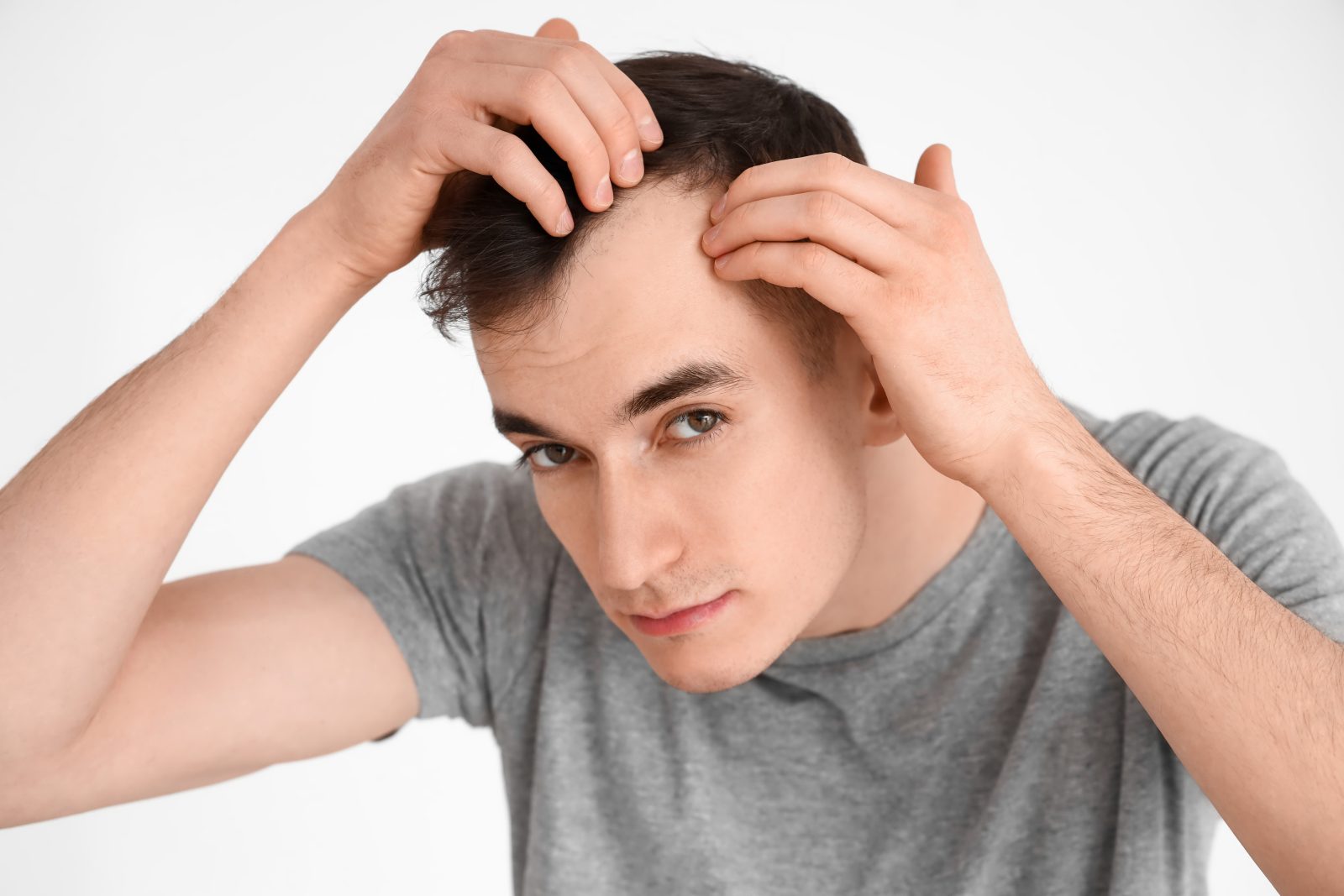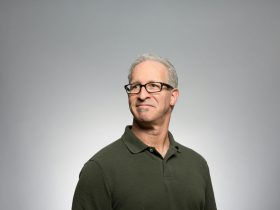Combatting hair loss offers a range of solutions, including medications, laser therapies, and hair transplants. If you’re a man seeking hair loss treatment, continue reading for our recommendations, complete with advantages, disadvantages, and associated costs.
While complete hair loss prevention isn’t always possible due to genetic or environmental factors, certain treatments, and remedies may help slow down the process.
Before investing in supplements or special tonics, discover which ones have demonstrated potential in preventing or addressing hair loss.
Root Causes of Male Hair Loss
Hair loss may stem from:
- Genetics and family history: If hair loss runs in your family, you could be prone to male pattern baldness or androgenic alopecia—a genetic condition leading to gradual hair loss. This often manifests as receding hairlines or thin patches on the crown.
- Medical conditions: Certain health issues like hormonal imbalances or autoimmune disorders trigger hair loss. Thyroid disorders, scalp infections, or trichotillomania (hair-pulling disorder) can result in thinning or bald spots. Alopecia areata, an autoimmune ailment, prompts immune system attacks on hair follicles, leading to bald patches.
- Medications and treatments: Hair loss may result from various medications used for cancer, depression, heart disease, arthritis, and gout.
- Stress: Prolonged stress or significant life events can trigger temporary hair thinning.
Irrespective of the cause, identifying the right treatment hinges on the abovementioned factors and individual preferences. To navigate your choices, explore our recommendations below to find the most suitable treatment for your needs.
Options for Hair Loss Treatment
Both prescription and over-the-counter (OTC) medications are available to address male pattern baldness. The Food and Drug Administration (FDA) has approved two medications for this purpose:
- Minoxidil (Rogaine): Rogaine is offered OTC in liquid or foam form, available as Men’s Rogaine and Women’s Rogaine formulas. Applying it twice daily to the scalp encourages hair growth and prevents further loss. Minoxidil is the active ingredient in Rogaine and is also available in generic form as a liquid or oral tablet. Results typically require 4–6 months, contingent upon proper usage and dosage.
- Finasteride (Propecia, Proscar): This is a daily oral pill that requires a doctor’s prescription. The FDA indicates that visible outcomes from the drug generally emerge after at least 3 months of consistent use.
- Combining Minoxidil and Finasteride: Some individuals dealing with hair loss might find benefit in a prescription treatment that combines these two medications. Although minoxidil is accessible OTC, concentrations above 5% demand a prescription. Services like Roman, Keeps, and Happy Head can evaluate subscribers to determine if a concentration beyond 5% is suitable.
For both minoxidil and finasteride, it may take up to 1 year to witness noticeable improvements, and consistent use is necessary to sustain the benefits.
Hair Transplant Procedures
The two primary hair transplant techniques are follicular unit transplantation (FUT) and follicular unit extraction (FUE). It’s important to note that both of these procedures are surgical in nature, potentially involving higher costs and some degree of discomfort.
It’s also essential to be aware of potential risks, such as infections and scarring. Achieving the desired outcome may require multiple hair transplant sessions.
Follicular Unit Transplantation (FUT)
FUT is a more traditional approach. It involves the removal of a strip of skin, usually from the back of the scalp where hair is plentiful. From this strip of skin, the surgeon extracts individual follicles. These extracted follicles are then implanted into the area of the scalp experiencing hair loss.
Follicular Unit Extraction (FUE)
In the FUE technique, the surgeon directly extracts hair follicles from the scalp and transplants them into areas with hair loss. Direct Hair Implantation (DHI) is a variation of this method that employs a specialized tool to carry out the procedure.
Laser Treatment
Laser treatment is believed to assist in reducing inflammation in hair follicles, which can hinder regrowth in conditions like alopecia areata. Additionally, for various forms of hair loss, a 2013 review suggests that low-level laser therapy (LLLT) might stimulate hair growth through different mechanisms.
However, there is limited scientific evidence supporting the effectiveness of laser treatments for hair loss. Nonetheless, a 2015 review indicates that LLLT is both safe and effective for addressing male pattern hair loss.
Further research on LLLT is required, as highlighted in a 2019 review.
Lifestyle Changes
Quit Smoking
If you’re a smoker, you’re likely familiar with the negative impact smoking has on your lungs. However, did you know that smoking might also be linked to hair loss?
A study from 2020 involving 1,000 men found that the majority of smokers experienced some level of hair loss, compared to less than half of non-smoking participants. Quitting smoking could potentially reduce hair loss.
Scalp Massage
Massages not only feel great but they might also contribute to addressing hair loss. Massaging the scalp can stimulate hair follicles.
In a small 2016 study, healthy Japanese men who received a 4-minute daily scalp massage for 24 weeks showed thicker hair by the end of the study. Research from 2019 also indicated that scalp massages were associated with self-perceived improvements in hair density.
Balanced Diet
Maintaining a balanced diet is essential for healthy hair. Incorporate a variety of vegetables, fruits, whole grains, unsaturated fats, and lean proteins into your meals. Reducing sweets can also be beneficial.
A 2018 literature review suggested a link between certain vitamins and minerals found in food and healthy hair. Foods rich in iron, omega-3 fatty acids, and high-quality proteins can contribute to hair health. Staying hydrated with enough water is also important.
Reduce Stress
Stress can have negative effects on the body, including hair health. It’s crucial to adopt stress-reduction strategies:
- Engage in regular physical activity, such as exercise.
- Listen to music for relaxation.
- Practice yoga or meditation.
- Ensure you’re getting sufficient sleep.
Natural Remedies
Oils
Peppermint oil may have potential for hair growth based on a 2014 mice study. Similarly, rosemary oil has been traditionally used to improve scalp blood circulation. A 2013 study demonstrated that rosemary leaf extract promoted hair regrowth in mice. While coconut oil, castor oil, and olive oil are often recommended, a 2020 research review suggests their benefits for hair growth are limited.
Saw Palmetto
Saw palmetto, a plant with small berries, may aid hair growth with minimal side effects according to a 2020 review.
Biotin
Biotin, found in foods like nuts, sweet potatoes, eggs, onions, and oats, may help slow hair loss. However, most research has been conducted in women with biotin deficiency, and the impact in healthy individuals is not well-supported.
Onion Juice
A 2014 study indicated that using onion juice topically resulted in more hair regrowth compared to tap water for those with patchy alopecia areata. Further research is needed for male pattern hair loss.
Bhringraj
Bhringraj (Eclipta alba), also known as false daisy, is an herb in Ayurvedic medicine believed to support hair growth. A 2008 rat study showed it promoted better hair regrowth than minoxidil. Human studies are necessary for confirmation.
Green Tea
Green tea is suggested as an herbal remedy for hair loss. A 2005 study in mice revealed potential benefits from polyphenolic compounds in green tea. However, human studies are lacking.
Hibiscus
Chinese hibiscus (Hibiscus rosa-sinensis) is marketed for hair growth. A 2003 mice study demonstrated positive effects on hair follicles, but no human studies have been conducted.
Understanding Male Pattern Baldness
Male pattern baldness, also known as androgenetic alopecia, is a genetic trait that affects over half of men over 50, as stated by Medline Plus. While genetics play a significant role, stress and autoimmune conditions like alopecia areata can also contribute to hair loss.
On a daily basis, it’s normal to lose around 50 to 100 hairs. Typically, this natural loss goes unnoticed because new hair grows in to replace what’s shed. Hair loss occurs when hair falls out too rapidly or new hair growth slows down.
Hair Care Tips
When brushing or styling your hair, opt for a gentle approach. Avoid frequent twisting, pulling, or tight hairstyles that can contribute to hair loss.
To minimize the risk of hair loss, consider avoiding:
- Tight hairstyles like braids, cornrows, buns, and pigtails
- Chemical treatments for perms and straightening
- Hot curling or straightening tools
- Hair bleaching
If you choose to use chemicals or bleach, seek assistance from a trained professional rather than attempting it at home.
Consult a Doctor
Beyond genetics, several medical conditions can trigger hair loss. Addressing these underlying conditions is essential for managing hair loss effectively.
Medical conditions that could contribute to hair loss include:
- Diabetes
- Lupus
- Lichen planus
- Sarcoidosis
- Scalp psoriasis
- Alopecia areata
- Thyroid disorders
- Eating disorders due to poor nutrition
- Iron deficiency anemia
- Trichotillomania (hair-pulling disorder)
- Celiac disease
- Syphilis
If you’re experiencing hair loss alongside these conditions or other symptoms, consult a doctor for appropriate treatment. As your underlying condition improves, your hair loss may also show improvement.
Discuss Medications with Your Doctor
Certain medications can lead to hair loss. These include:
- Chemotherapy and radiation treatments
- Certain blood thinners (anticoagulants)
- Some antidepressants
- Medications for high blood pressure
- Specific heart medications
- Gout medications
- Isotretinoin (Accutane), used for acne treatment
If you’re on any of these medications and notice hair loss, discuss your concerns with a physician. They can provide guidance on managing this side effect or exploring alternative treatments.
Preventing Hair Loss: Tips and Costs
If you’re noticing thinning hair or have a family history of male pattern baldness, complete prevention may not be possible, but you can take steps to slow down or reduce it. Consider these straightforward tips to help prevent hair loss in men:
- Manage Stress: Find effective ways to reduce stress levels, as stress can contribute to hair loss.
- Prioritize Health: Maintain a nutritious diet and stay physically active to support overall well-being.
- Gentle Hairstyles: Avoid hairstyles that pull or strain your hair excessively.
- Hair Products: Opt for hair products designed to prevent hair loss.
- Quit Smoking: Smoking can worsen hair loss, so consider quitting.
- Scalp Massages: Try gentle scalp massages to stimulate hair follicles.
- Consult a Professional: Talk to a healthcare provider to explore potential medication or medical condition factors.
Hair Loss Treatment Costs
The cost of hair loss treatment varies depending on the approach you choose. Here are some examples:
- Brand name Rogaine: Around $78 for a 3-month supply, while generic minoxidil treatments cost approximately $53 for the same duration.
- Brand name Propecia: Starts at about $110 for a 1-month supply, while the generic version can be as low as $9 for 1 month.
- Hair transplants: Costs range from $3,000 to $15,000.
Generic medications and over-the-counter supplements tend to be more budget-friendly.
All prices are accurate as of July 2023.
When to Seek Medical Advice
It’s advisable to consult a doctor if you:
- Experience sudden patchy hair loss.
- Suspect a medication is contributing to your hair loss.
- Develop a rash alongside hair loss.
- Notice scaly skin issues.
You can better manage and address hair loss concerns by taking proactive steps and seeking professional guidance.
FAQs about Hair Loss Treatments for Men
What’s the Best Hair Loss Treatment for Men?
The ideal hair loss treatment varies from person to person. Consult a doctor to determine which option suits you, as OTC products and home remedies may not be suitable for everyone.
Can Hair Loss Be Treated Successfully?
Hair loss treatments, such as OTC medications, prescription drugs, and home remedies, work for some individuals, but not all. For instance, Rogaine is effective for hereditary baldness at the crown’s base.
What Happens if I Stop Hair Loss Treatment?
The outcome depends on the treatment. Ongoing use of OTC or prescription medications like Rogaine and Propecia is necessary for maintaining results.
Can Hair Loss Be Permanently Treated?
Hair implants usually offer a permanent solution, though multiple procedures may be required based on your hair restoration goals. Is Complete Hair Loss Prevention Achievable? Can Hair Regrow After Balding?
Regrowth is possible through treatments, medications, or a combination thereof. However, certain conditions may hinder regrowth. Hair may regrow naturally if stress lessens or nutrition improves. Yet, conditions like alopecia areata or scalp damage may not respond well to standard medications.For limited results from home remedies or OTC products, consult a healthcare professional to identify the cause and discuss effective treatments.
In Conclusion
Explore various hair loss treatments, including OTC products, prescriptions, implants, and home remedies. Seek guidance from a doctor to determine the cause of your hair loss and the most suitable treatment option.















Find Us on Socials